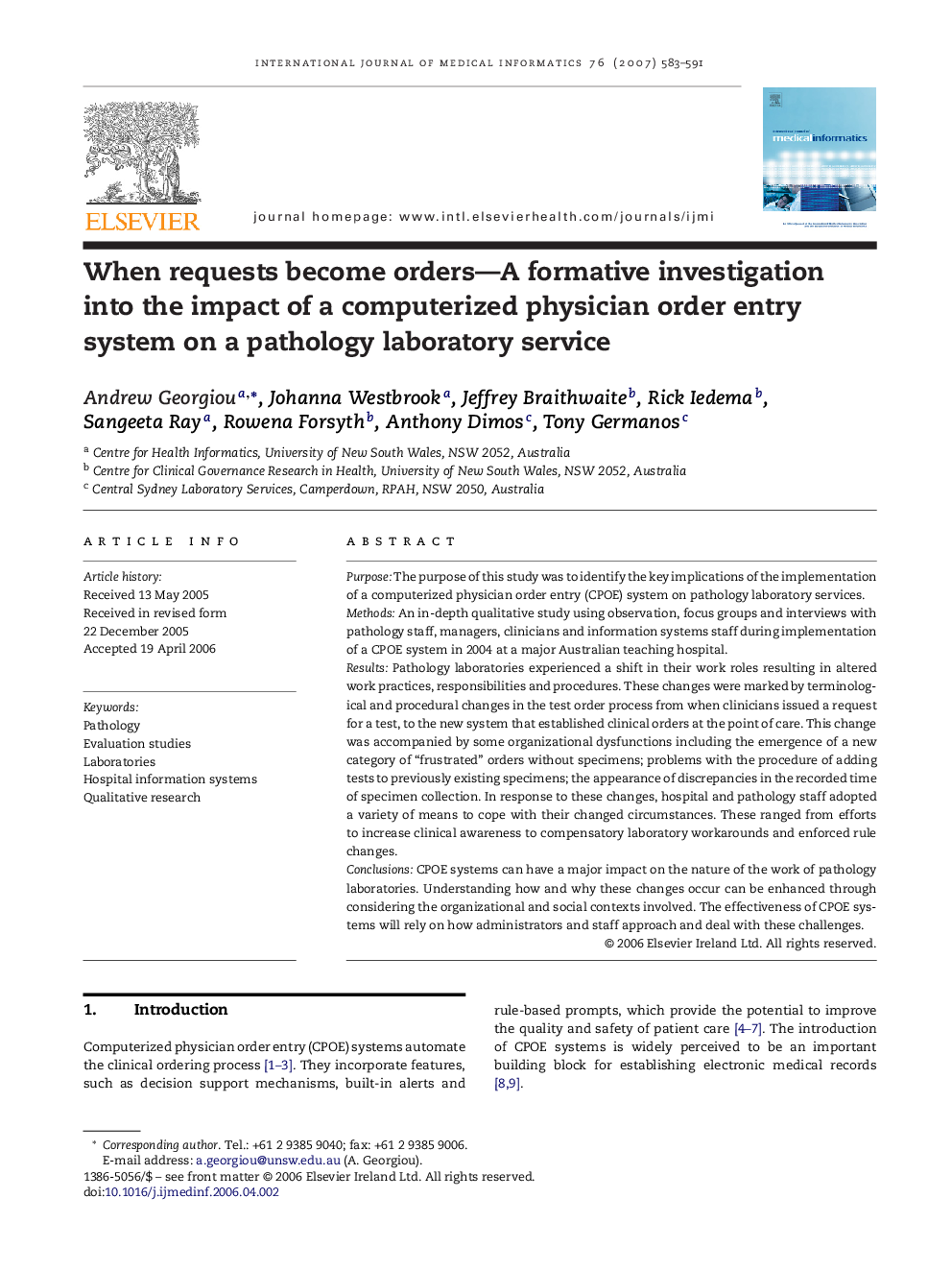| Article ID | Journal | Published Year | Pages | File Type |
|---|---|---|---|---|
| 517201 | International Journal of Medical Informatics | 2007 | 9 Pages |
PurposeThe purpose of this study was to identify the key implications of the implementation of a computerized physician order entry (CPOE) system on pathology laboratory services.MethodsAn in-depth qualitative study using observation, focus groups and interviews with pathology staff, managers, clinicians and information systems staff during implementation of a CPOE system in 2004 at a major Australian teaching hospital.ResultsPathology laboratories experienced a shift in their work roles resulting in altered work practices, responsibilities and procedures. These changes were marked by terminological and procedural changes in the test order process from when clinicians issued a request for a test, to the new system that established clinical orders at the point of care. This change was accompanied by some organizational dysfunctions including the emergence of a new category of “frustrated” orders without specimens; problems with the procedure of adding tests to previously existing specimens; the appearance of discrepancies in the recorded time of specimen collection. In response to these changes, hospital and pathology staff adopted a variety of means to cope with their changed circumstances. These ranged from efforts to increase clinical awareness to compensatory laboratory workarounds and enforced rule changes.ConclusionsCPOE systems can have a major impact on the nature of the work of pathology laboratories. Understanding how and why these changes occur can be enhanced through considering the organizational and social contexts involved. The effectiveness of CPOE systems will rely on how administrators and staff approach and deal with these challenges.
